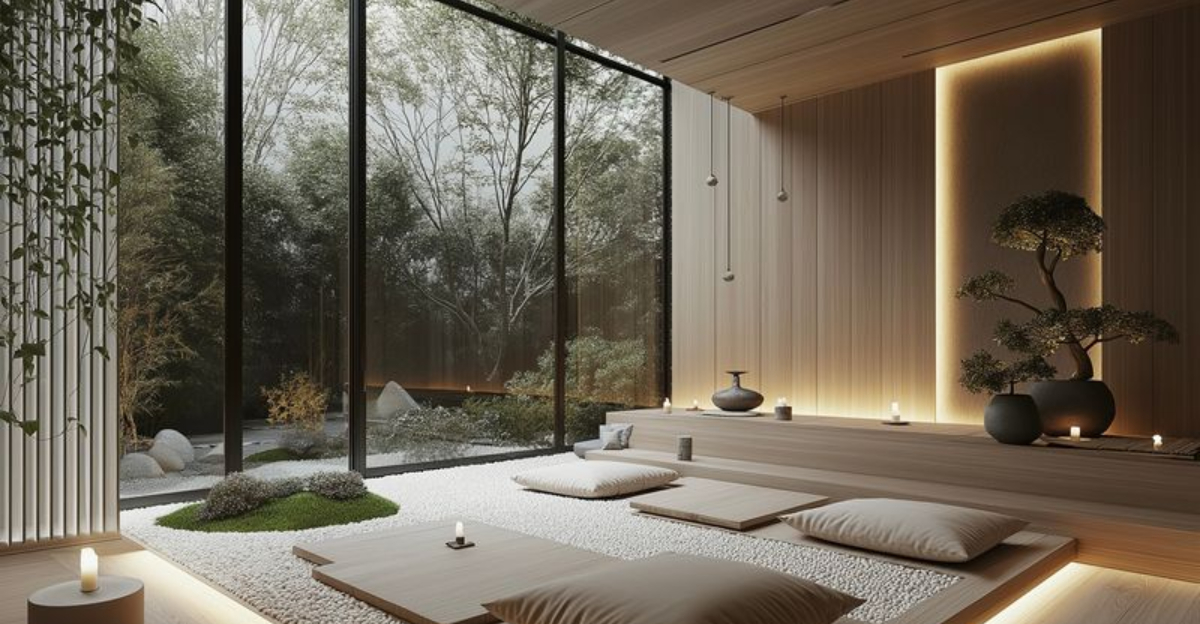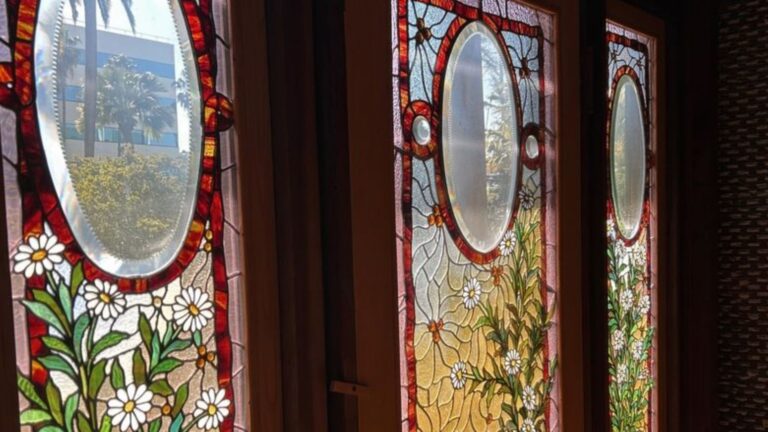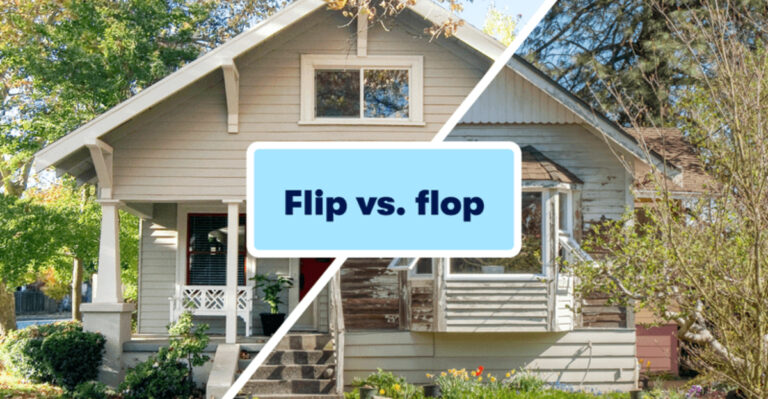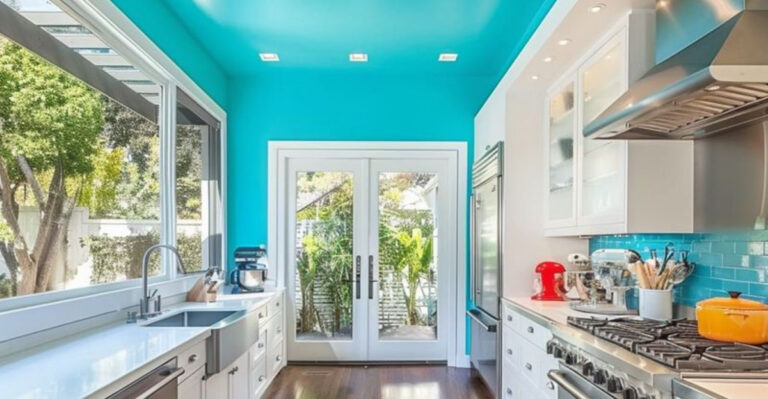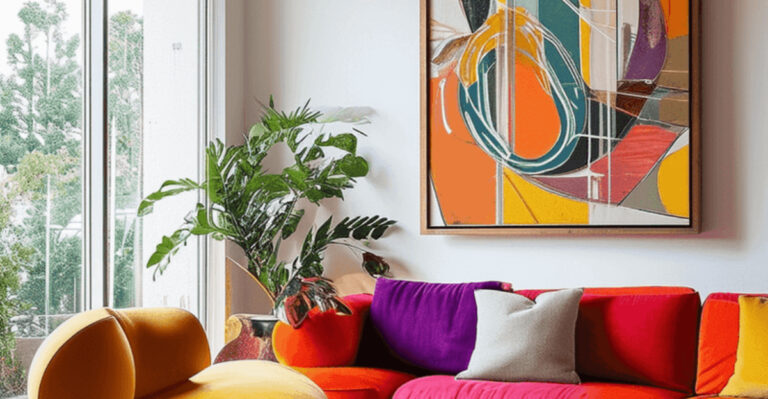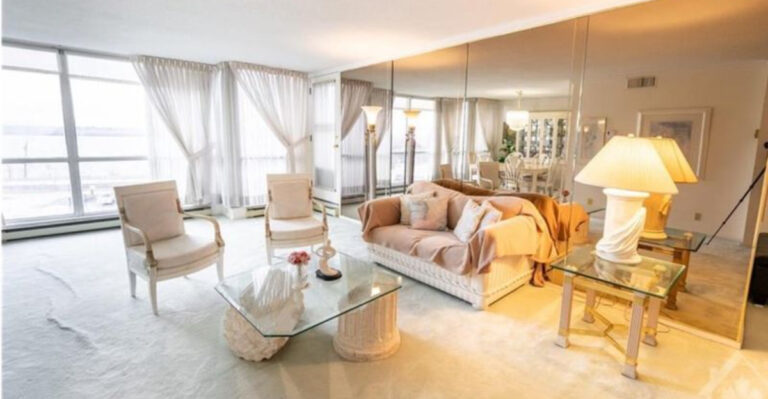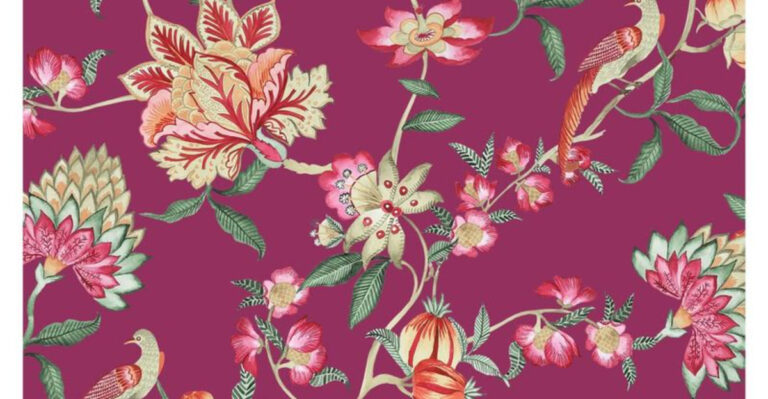15 Interior Decor Trends That Will Define the Decade
Home design is evolving faster than ever, bringing fresh aesthetics into our living spaces. As we move through this decade, certain interior styles are gaining serious momentum and reshaping how we think about our homes.
From sustainability to tech integration, these emerging trends reflect our changing values and lifestyles while promising to transform everyday spaces into something extraordinary.
1. Biophilic Bliss
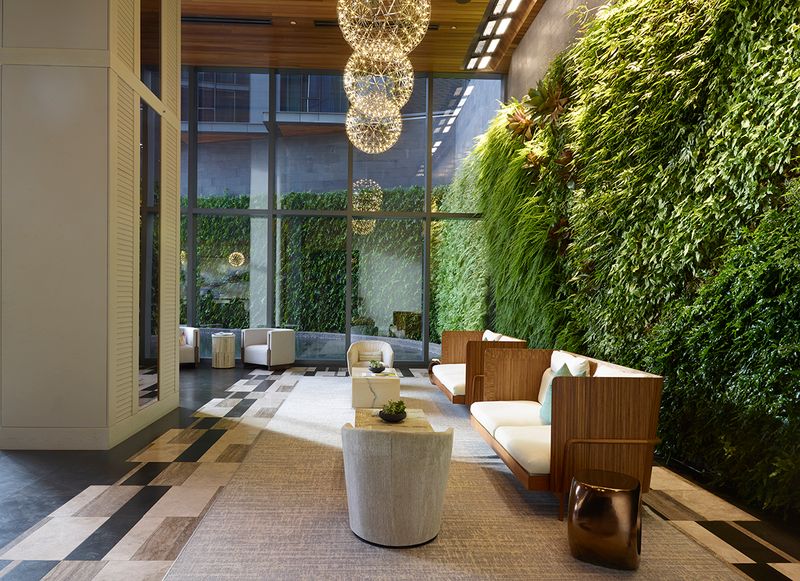
Living walls have graduated from experimental to essential in modern homes. Beyond potted plants, entire vertical gardens now transform blank walls into lush, breathing art installations.
The psychological benefits are substantial – reduced stress, improved air quality, and enhanced creativity. Even in smaller spaces, scaled-down versions bring nature’s calming presence indoors.
2. Japandi Harmony
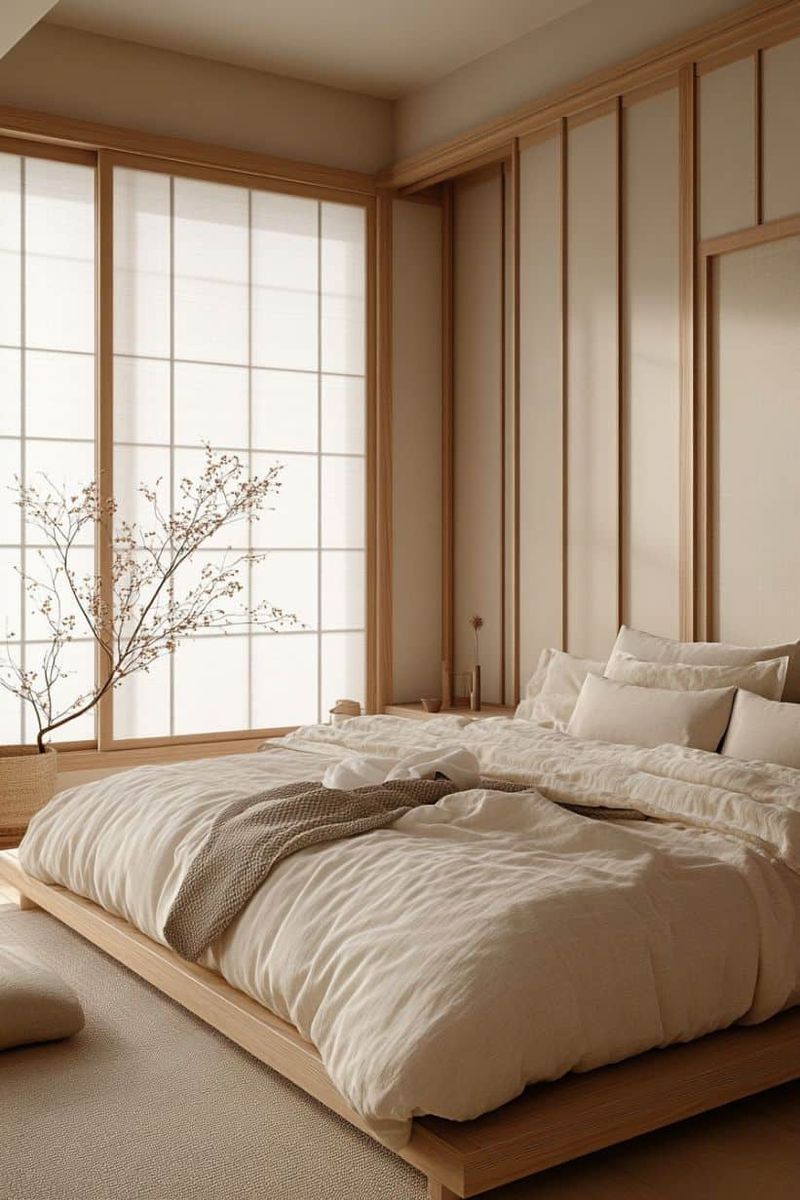
Scandinavian minimalism meets Japanese rustic elegance in this hybrid style gaining devoted followers worldwide. Clean lines and neutral palettes create a foundation, while handcrafted elements add soul.
Natural materials – unfinished woods, raw linens, and stone – dominate the aesthetic. The focus on imperfection (wabi-sabi) alongside functional simplicity creates spaces that feel both zen and cozy.
3. Curved Architecture
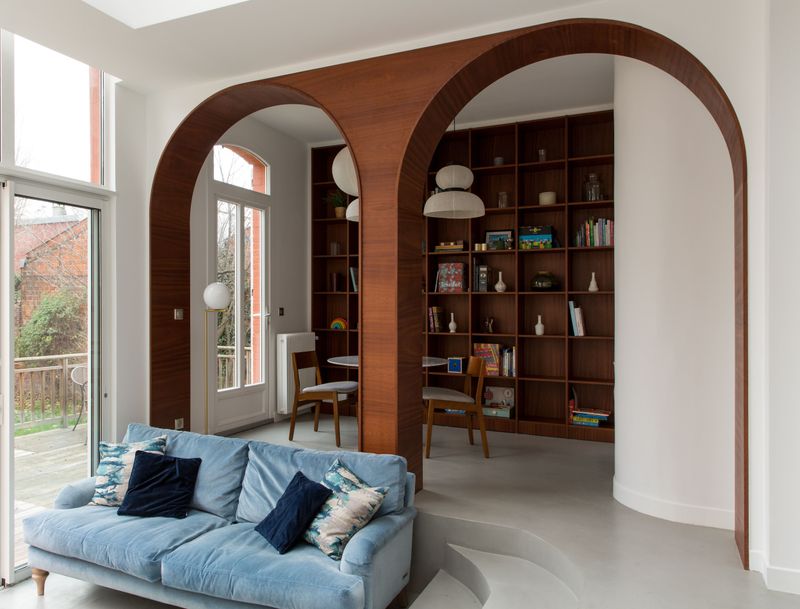
Angular minimalism is giving way to sweeping curves and organic shapes. Arched doorways, rounded furniture, and circular details soften living spaces while adding visual interest.
The psychology behind this shift makes sense – curves feel inherently comforting compared to sharp corners. Look for curved statement staircases, barrel-vault ceilings, and flowing room dividers becoming architectural focal points in forward-thinking homes.
4. Smart Homes, Smarter Integration
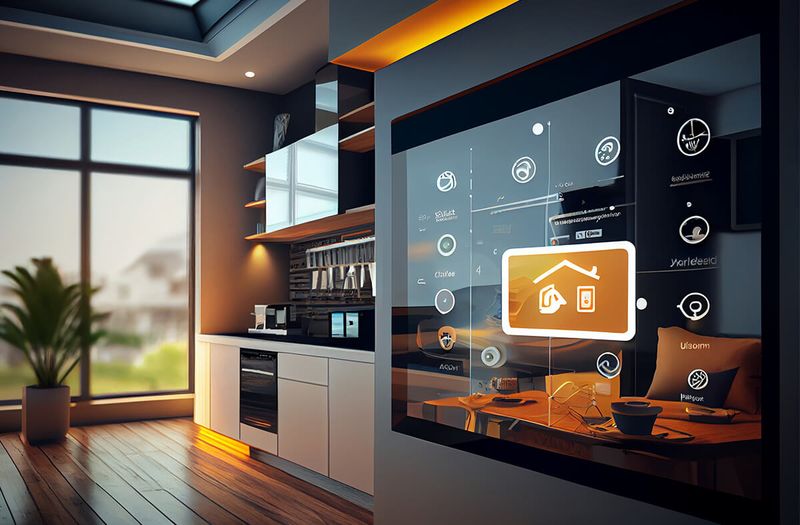
Gone are the days of clunky tech disrupting your carefully curated aesthetic. The new wave of smart home features disappear seamlessly into walls, furniture, and fixtures.
Voice-activated systems now control everything from lighting to security without visible hardware. Programmable glass can shift from transparent to opaque on command, while charging surfaces are built directly into countertops and tables.
5. Maximalist Revival
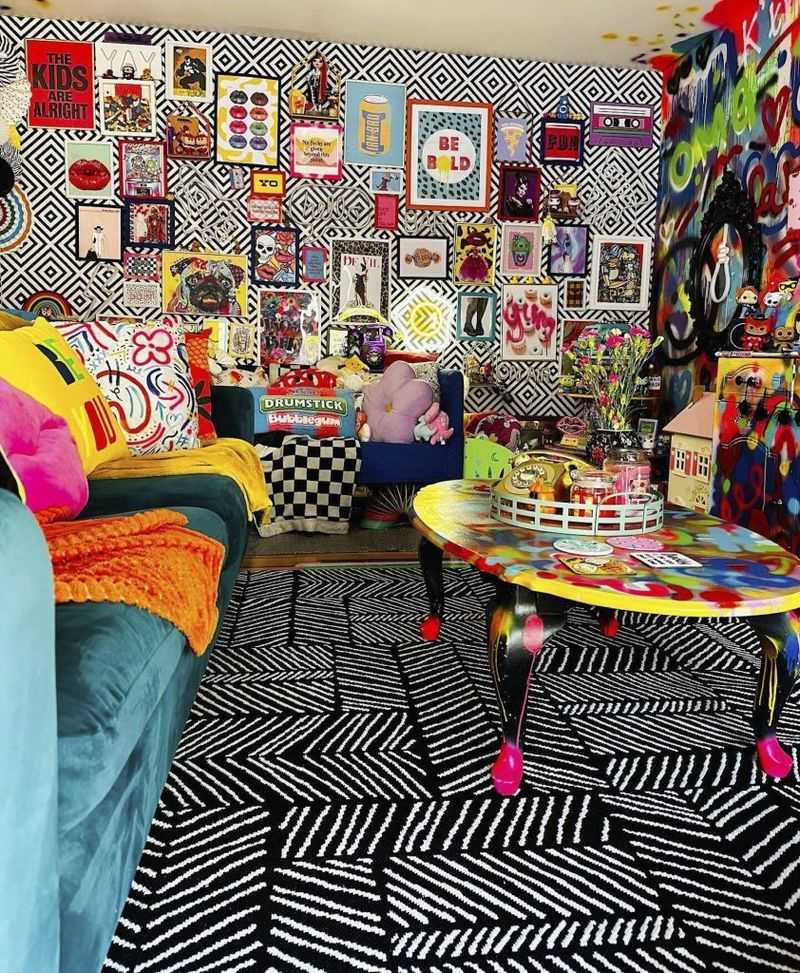
Minimalism’s long reign faces a colorful challenger as maximalism returns with gusto. Pattern mixing, bold color combinations, and curated collections create spaces bursting with personality.
Gallery walls evolve into full salon-style displays covering entire rooms. The key difference from previous maximalist eras? Intentionality. Each element feels purposeful rather than cluttered, with careful attention to balance despite the abundance.
6. Sustainable Luxury
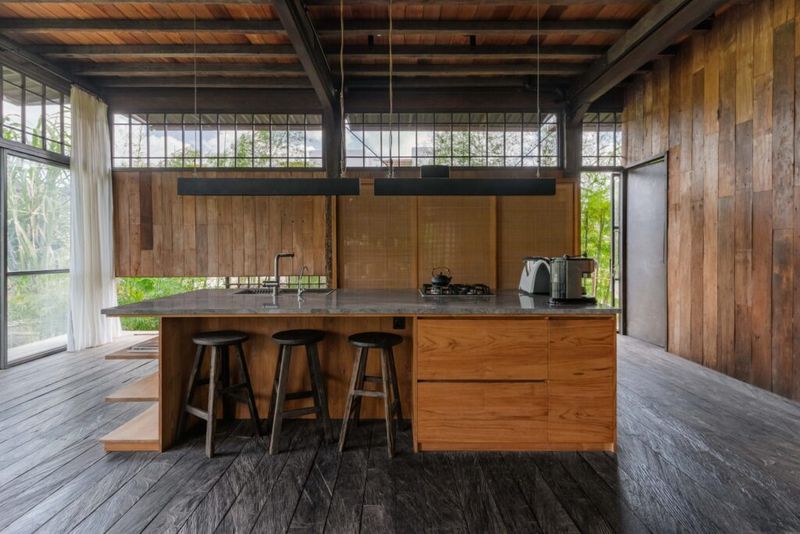
Eco-consciousness no longer means sacrificing sophistication. Reclaimed materials now appear in high-end applications – salvaged wood becomes statement flooring, while recycled glass transforms into stunning countertops.
Luxury brands increasingly emphasize their environmental credentials alongside craftsmanship. And hey, vintage investment pieces aren’t just sustainable – they’re becoming status symbols that signal both taste and environmental awareness.
7. Multifunctional Spaces
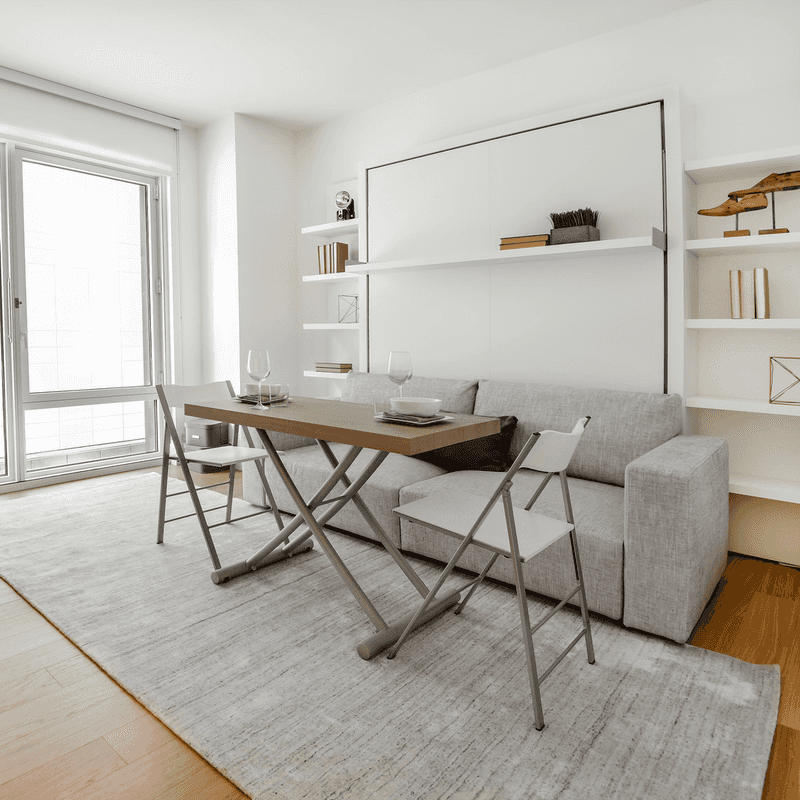
Single-purpose rooms are vanishing as homes adapt to our complex lives. Living rooms transform into home offices by day and entertainment zones by night through clever furniture solutions.
Murphy beds with integrated desks maximize studio apartments. Kitchen islands now incorporate drop-down tables, charging stations, and hidden storage. The most innovative designs make these transitions nearly invisible – no compromise necessary.
8. Grandmillennial Style
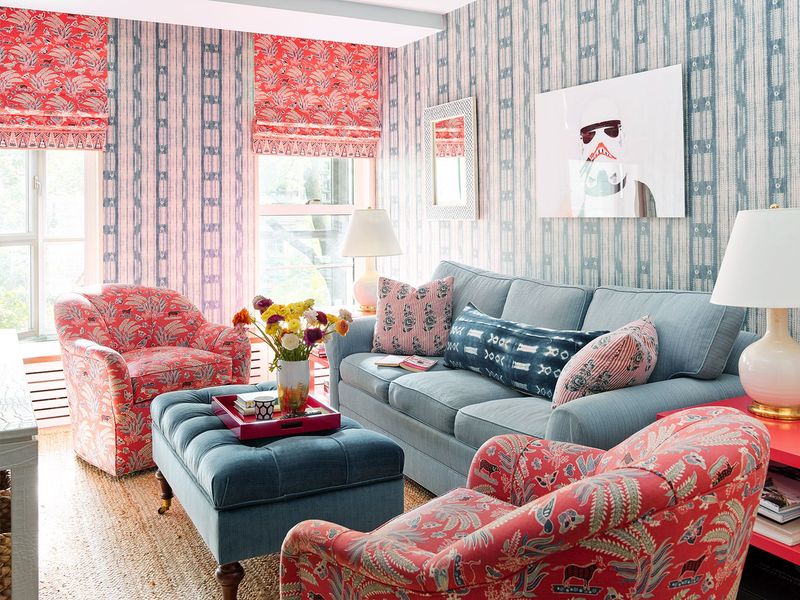
Millennials are embracing their grandparents’ aesthetics but with modern twists. Traditional patterns like chintz and toile appear on contemporary furniture shapes. Antique pieces mix with sleek modern elements for spaces that feel simultaneously nostalgic and fresh.
Needlepoint pillows, fringe details, and pressed flowers in modern frames create warm, personalized spaces. On the flip side, this trend rejects disposable furniture in favor of heirloom-quality pieces built to last generations.
9. Earthy Color Palettes
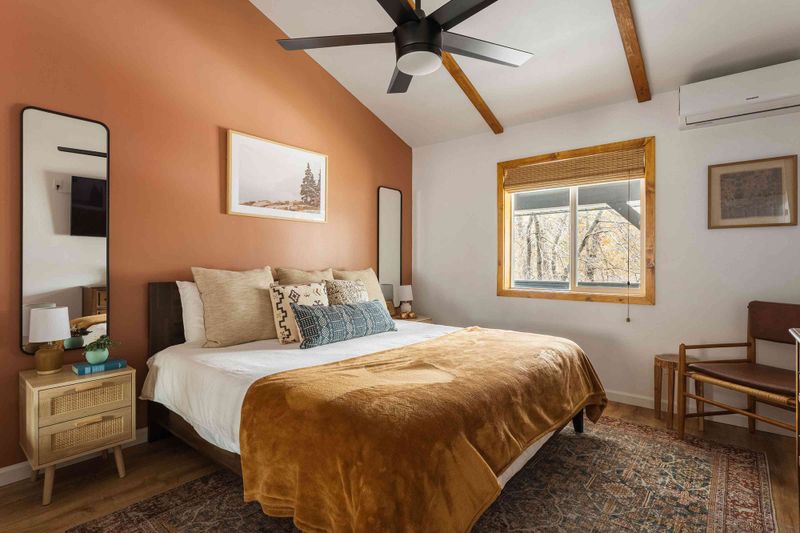
Crisp whites and cool grays are yielding to warmer, nature-inspired hues. Terracotta, olive green, ochre, and clay bring the outdoors in while creating grounding, comforting environments that feel both timeless and current.
These colors work particularly well in layered combinations rather than as single accent walls. Natural pigments and mineral-based paints add depth that flat synthetic colors can’t match, creating spaces that shift subtly with changing light throughout the day.
10. Statement Ceilings
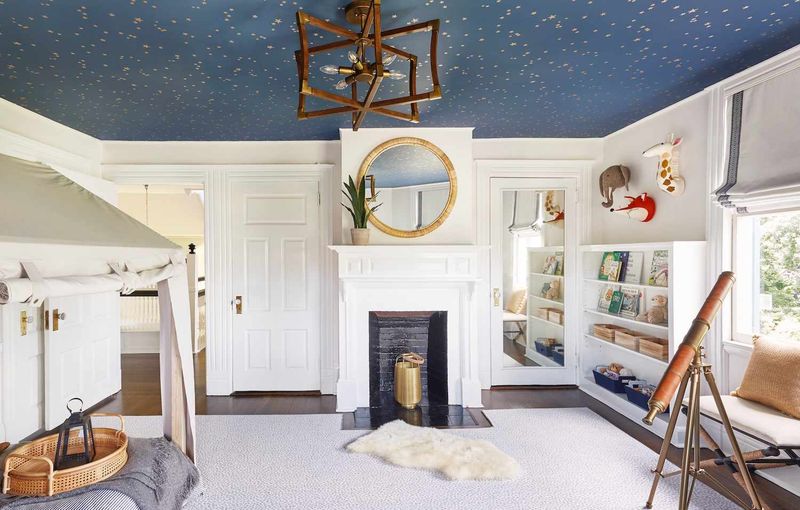
The “fifth wall” is finally getting its moment. Dramatic ceiling treatments – from bold wallpaper to wooden beams, intricate moldings to painted murals – draw the eye upward and transform ordinary rooms.
Even rental-friendly options like peel-and-stick wallpaper make ceiling transformations accessible. No surprise here, but this trend works particularly well in dining rooms, where guests naturally gaze upward while seated at the table.
11. Textural Richness
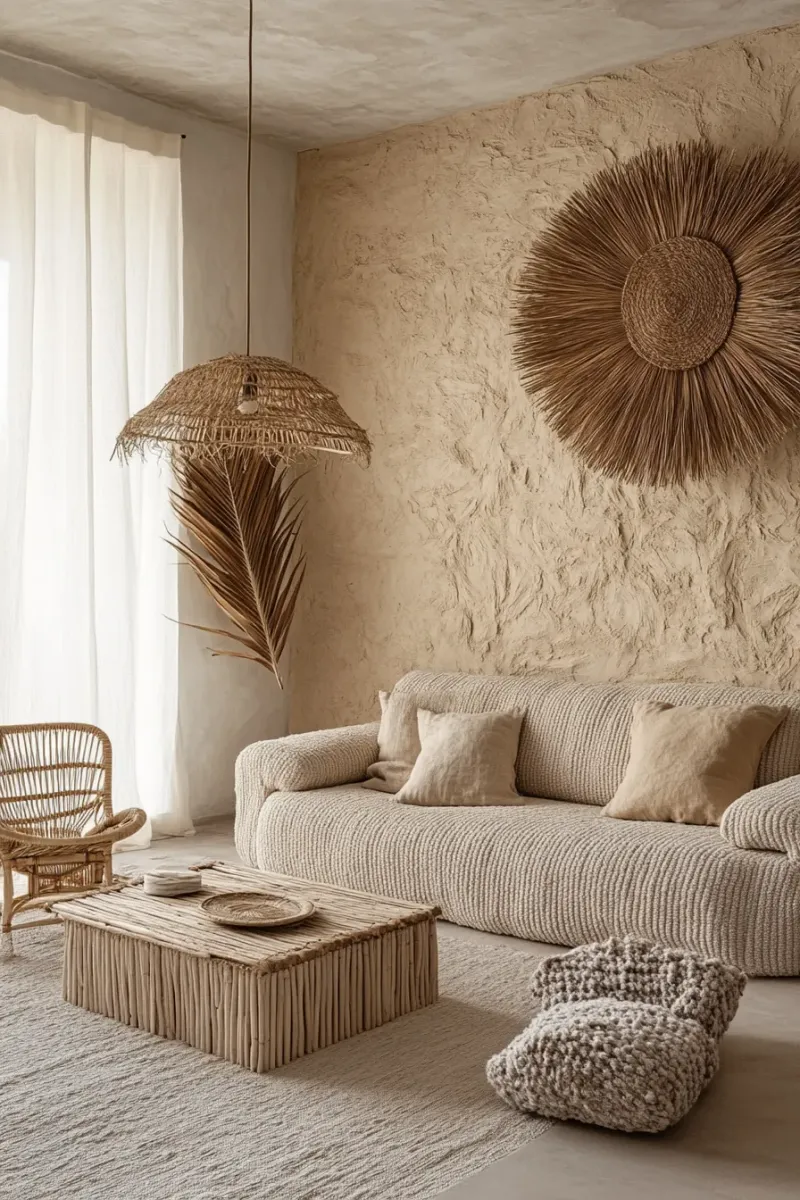
Visual interest now comes from tactile variety rather than busy patterns. Bouclé, sherpa, and teddy fabrics create inviting seating you can’t help but touch. Plaster walls with hand-troweled finishes add subtle dimension that flat paint can’t achieve.
Contrast is key – rough stone tables paired with silky-soft chairs, or smooth leather against nubby wool throws. The appeal is multisensory, creating spaces that beg to be experienced through touch as much as sight.
12. Sculptural Lighting
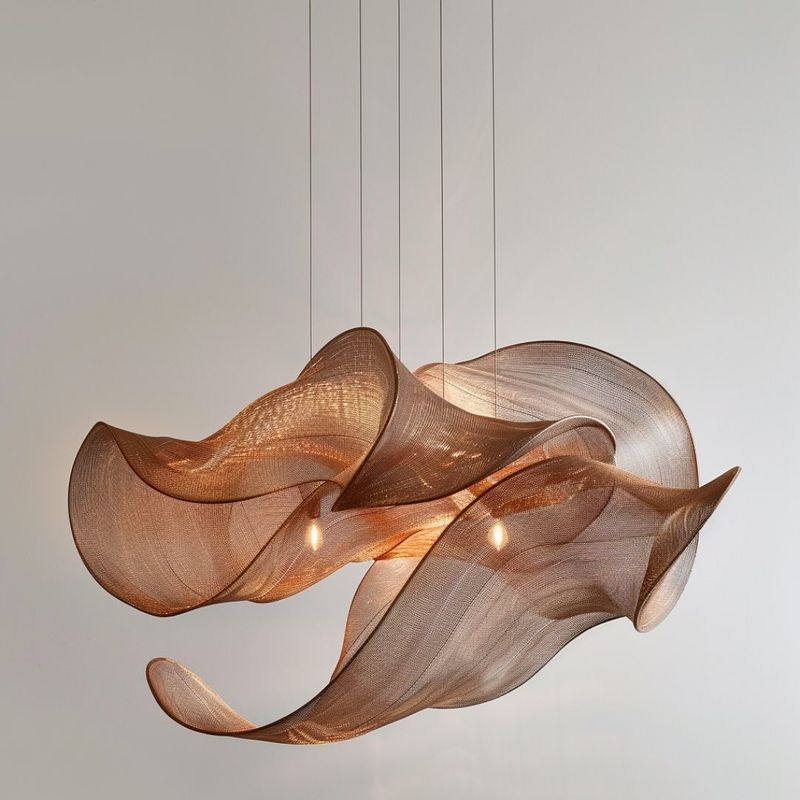
Lighting fixtures have evolved from practical necessities to architectural sculptures. Oversized pendants with organic shapes command attention even when switched off. Artistic floor lamps curve and twist, doubling as functional sculptures.
Materials range from handblown glass to woven fibers and hammered metals. The most striking designs create fascinating shadow patterns, effectively projecting art onto surrounding walls and transforming the entire room’s atmosphere.
13. Wellness-Focused Design

Homes are increasingly designed to support physical and mental wellbeing. Dedicated meditation corners feature sound insulation and circadian lighting systems. Air purification technology integrates invisibly into HVAC systems.
Bathrooms transform into spa-like retreats with chromotherapy showers and soaking tubs. Even kitchens evolve to support health, with indoor herb gardens and specialized storage for wellness ingredients becoming standard features in forward-thinking homes.
14. Global Fusion
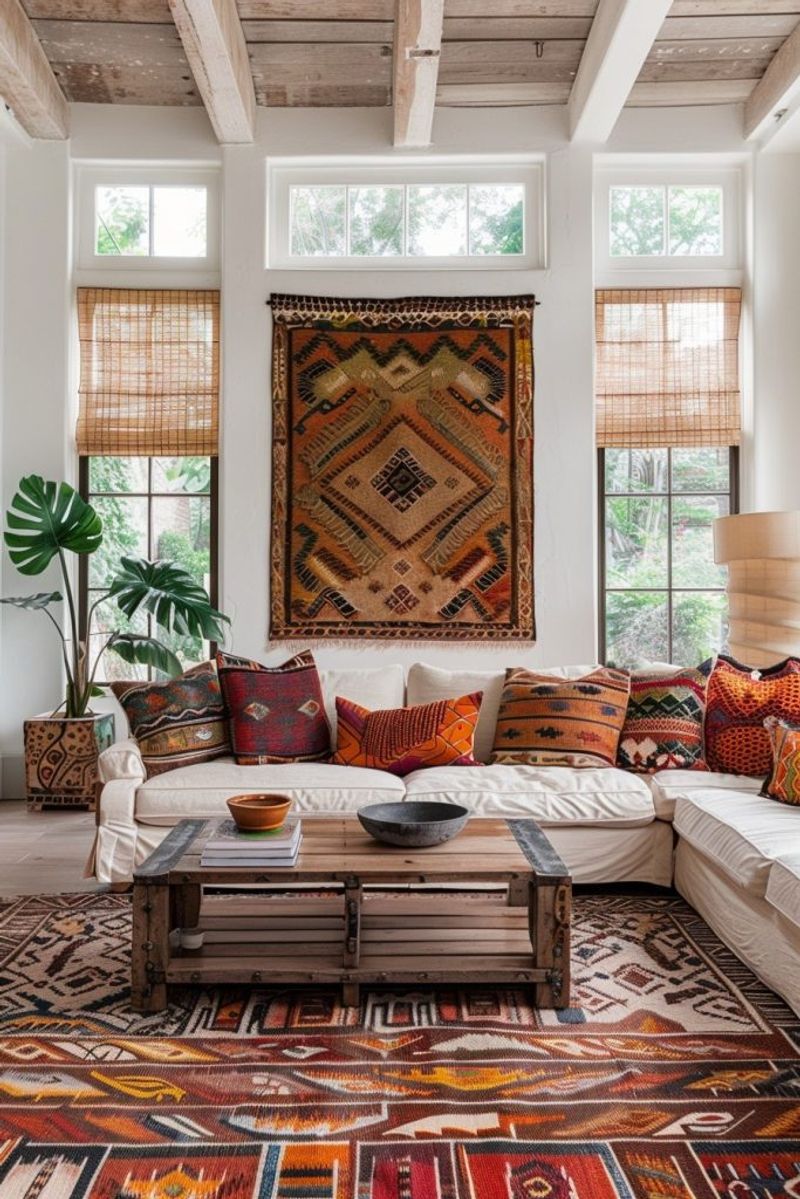
Cultural appreciation drives this sophisticated blend of worldwide design elements. Hand-carved African stools sit beside Moroccan rugs and Japanese ceramics, creating spaces with depth and story.
What makes this trend distinct from past global styles is the emphasis on authenticity and artisan support. Homeowners seek pieces with provenance, often purchasing directly from global craftspeople through online marketplaces that ensure fair compensation and preservation of traditional techniques.
15. Dark Academia Aesthetic
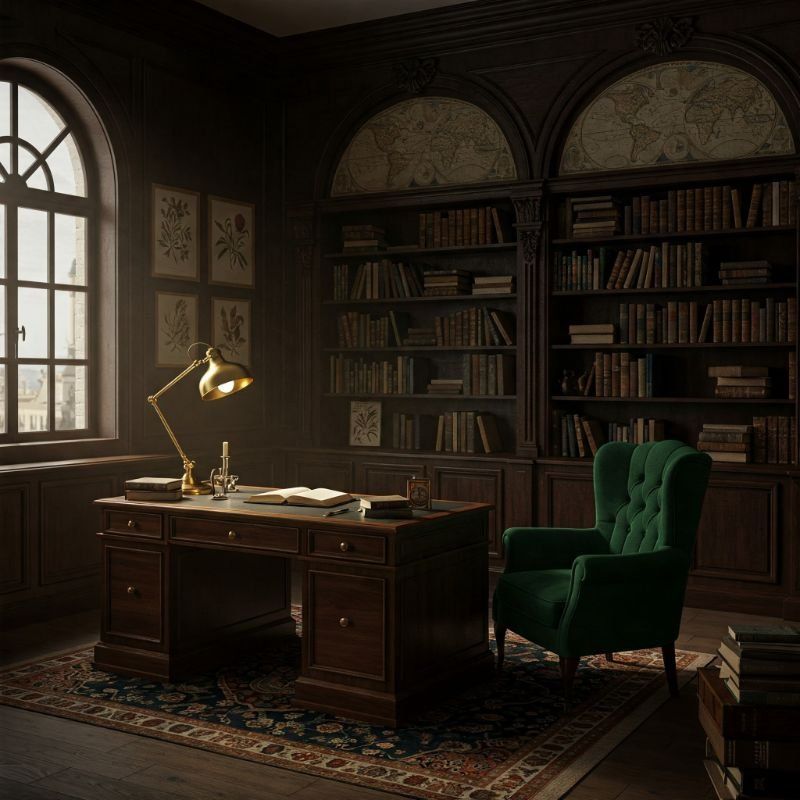
Inspired by classic literature and European universities, this moody style embraces intellectual pursuits as decor. Think wood-paneled walls, vintage maps, leather-bound books, and oil paintings in dark frames.
Rich colors – oxblood, forest green, navy – create dramatic backdrops for brass accents and amber glass. Furniture tends toward traditional silhouettes with a well-worn patina, suggesting spaces where great thoughts have been contemplated for generations.

